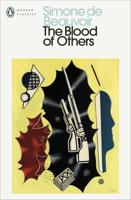Publisher's Synopsis
WHEN the porter's wife (she used to answer the house-bell), announced "A gentleman-with a lady, sir," I had, as I often had in those days, for the wish was father to the thought, an immediate vision of sitters. Sitters my visitors in this case proved to be; but not in thesense I should have preferred. However, there was nothing at first to indicate that theymight not have come for a portrait. The gentleman, a man of fifty, very high and verystraight, with a moustache slightly grizzled and a dark grey walking-coat admirably fitted, both of which I noted professionally-I don't mean as a barber or yet as a tailor-wouldhave struck me as a celebrity if celebrities often were striking. It was a truth of which I hadfor some time been conscious that a figure with a good deal of frontage was, as one mightsay, almost never a public institution. A glance at the lady helped to remind me of thisparadoxical law: she also looked too distinguished to be a "personality." Moreover onewould scarcely come across two variations together.Neither of the pair spoke immediately-they only prolonged the preliminary gaze whichsuggested that each wished to give the other a chance. They were visibly shy; they stoodthere letting me take them in-which, as I afterwards perceived, was the most practicalthing they could have done. In this way their embarrassment served their cause. I hadseen people painfully reluctant to mention that they desired anything so gross as to berepresented on canvas; but the scruples of my new friends appeared almostinsurmountable. Yet the gentleman might have said "I should like a portrait of my wife,"and the lady might have said "I should like a portrait of my husband." Perhaps they werenot husband and wife-this naturally would make the matter more delicate. Perhaps theywished to be done together-in which case they ought to have brought a third person tobreak the new










